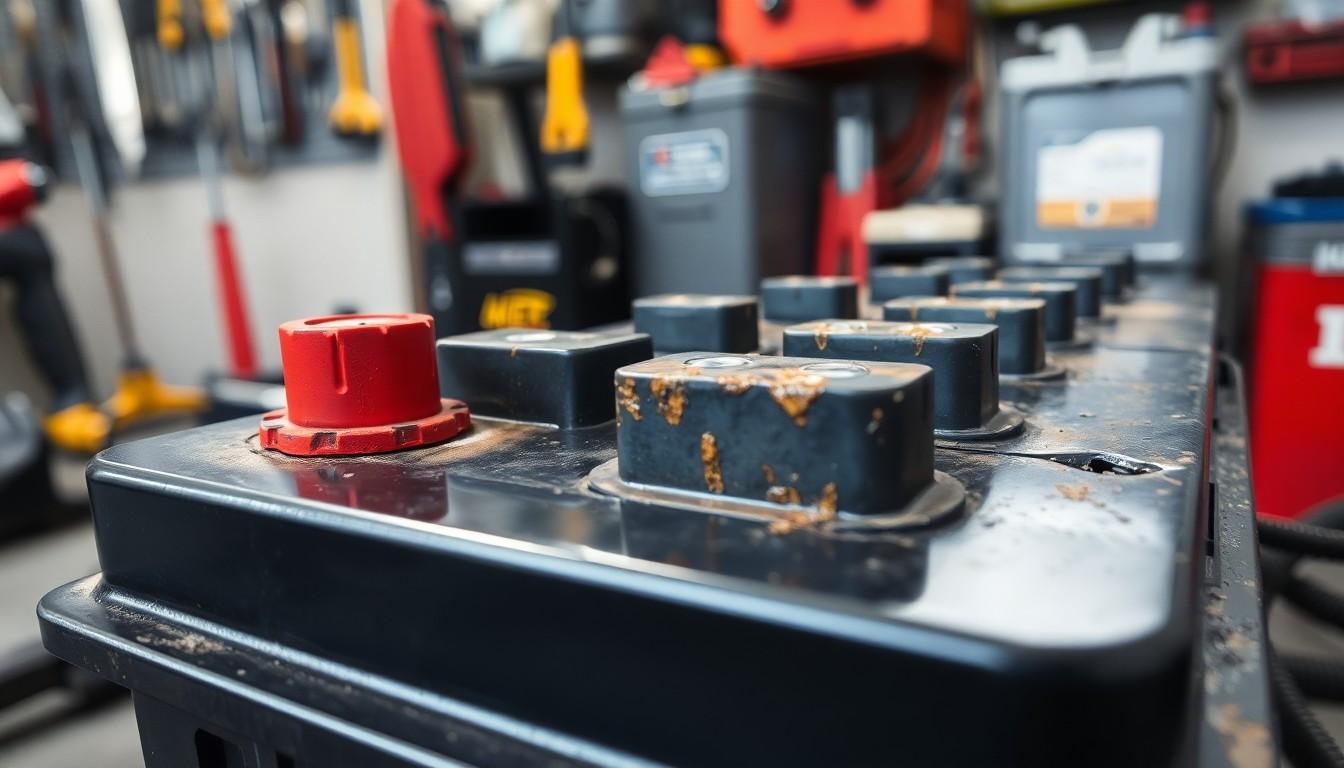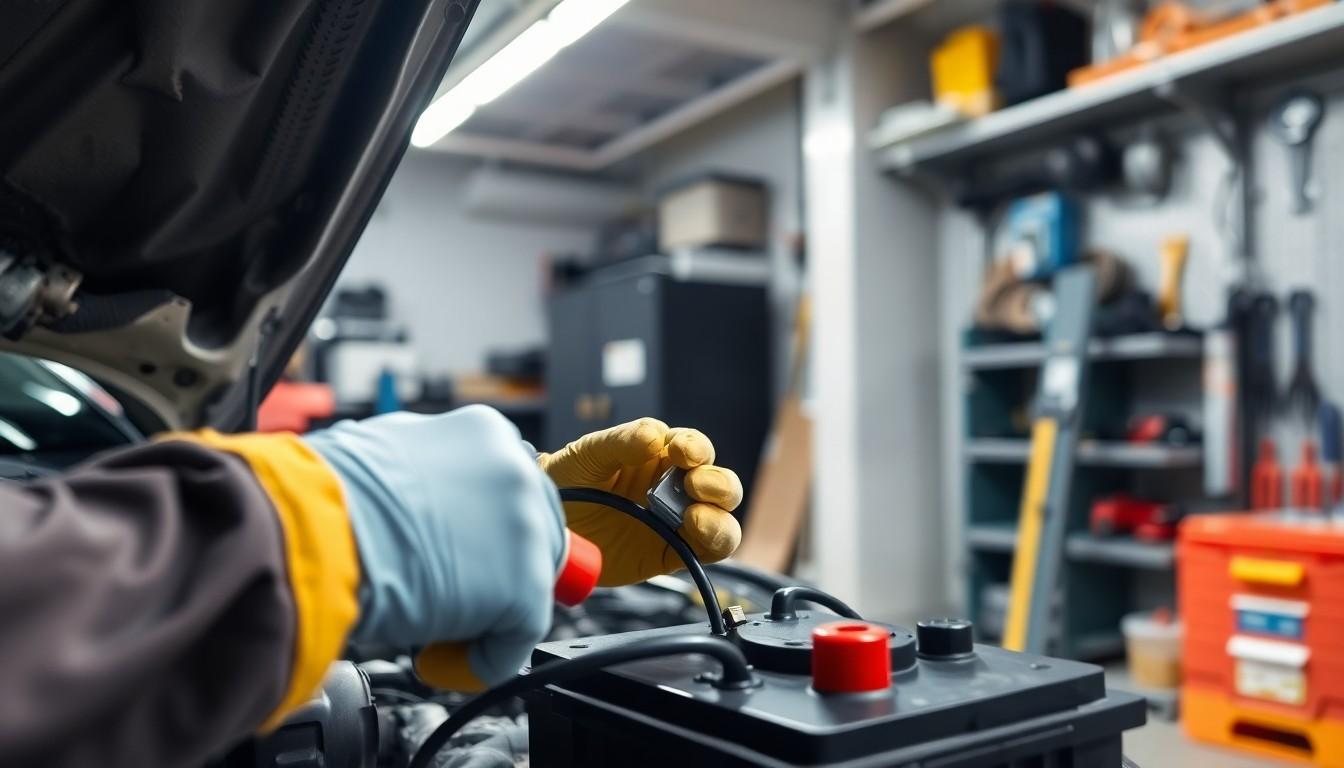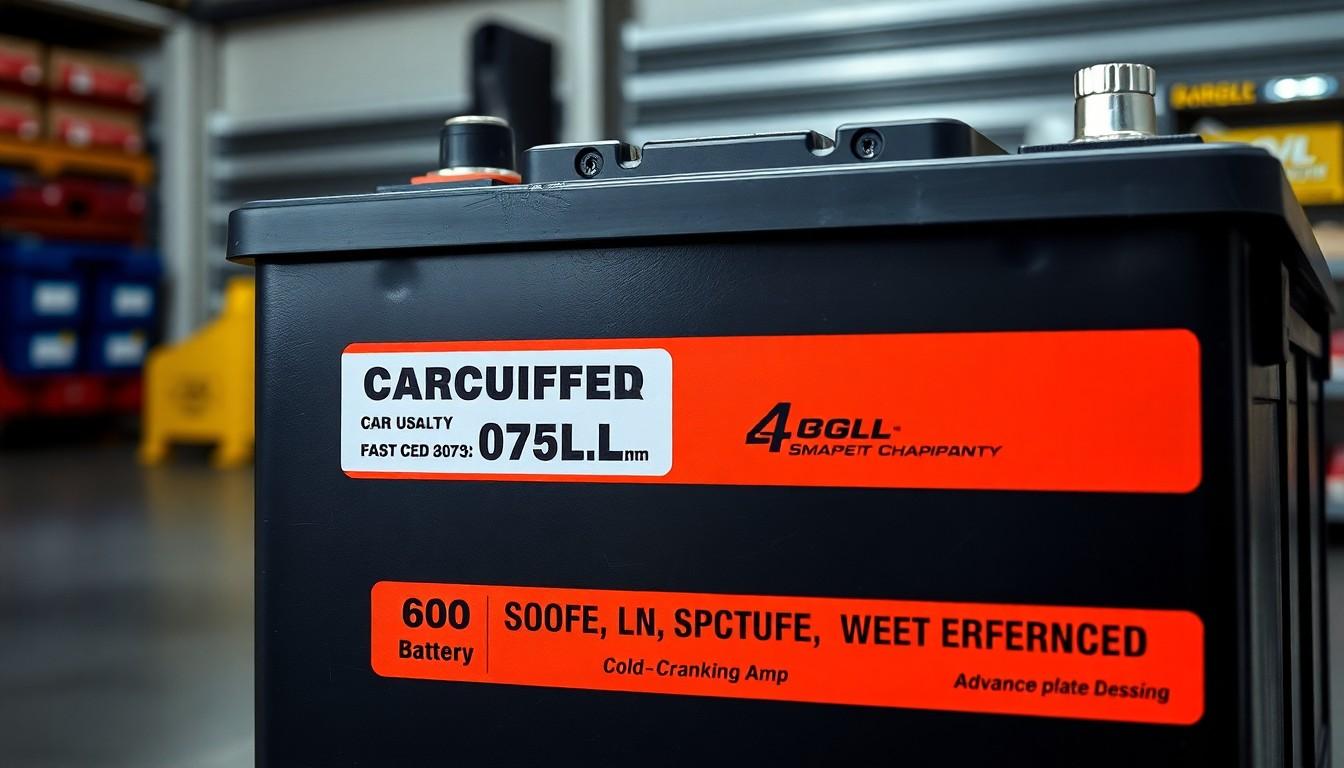Discovering your car won’t start after sitting unused can be incredibly frustrating. We’ve all been there—that sinking feeling when you turn the key and hear nothing but a click. But don’t worry, preventing your car battery from dying during periods of inactivity is simpler than you might think.
In this guide, we’ll share proven strategies to maintain your car battery’s health when your vehicle sits idle for extended periods. Whether you’re storing a seasonal vehicle, leaving town for vacation, or simply driving less these days, our practical tips will help extend your battery life and save you from unexpected breakdowns and costly replacements.
Why Car Batteries Die During Inactivity
Car batteries naturally discharge over time when not in use due to several key factors. Parasitic drains from electronic systems continue pulling small amounts of current even when the vehicle is off, gradually depleting the battery’s charge. Modern vehicles with many electronic components—such as alarm systems, onboard computers, and memory settings—create constant power demands that accelerate discharge rates.
Chemical self-discharge occurs inside the battery regardless of external connections. Lead-acid batteries lose approximately 1-3% of their charge daily through internal chemical reactions that happen naturally within the battery cells. Temperature extremes significantly impact this process, with heat accelerating chemical reactions and cold temperatures reducing battery efficiency.
Age and battery condition play crucial roles in how quickly discharge occurs. Older batteries with degraded internal components lose charge faster than newer ones. Batteries that have experienced multiple deep discharges or have accumulated sulfation on their lead plates hold less charge and discharge more rapidly during periods of inactivity.
Seasonal factors affect battery performance differently:
- Summer heat accelerates chemical reactions and evaporates electrolyte fluid
- Winter cold reduces chemical activity and battery capacity by up to 50%
- Fall and spring temperature fluctuations create stress on battery components
Short trips and infrequent driving create additional challenges. Starting a car requires important battery power, but brief drives don’t allow the alternator sufficient time to fully recharge the battery. This creates a net negative energy balance where the battery gradually depletes with each subsequent start. Vehicles driven less than 20 minutes per trip typically don’t receive adequate recharging.
Signs Your Car Battery Is at Risk When Not in Use

Self-Discharge
Self-discharge occurs naturally in all car batteries, even when they’re not connected to a vehicle. This process gradually depletes your battery’s power over time, making it a key factor to monitor during extended periods of non-use. Battery manufacturers design their products to minimize self-discharge, but it’s impossible to eliminate completely.
Parasitic Drain
Electronic systems in your car continue drawing power even after you’ve turned off the ignition. Onboard computers, alarm systems, and other components silently deplete your battery’s charge. Modern vehicles with advanced electronics typically experience higher parasitic drain rates than older models. These small but continuous power draws can completely drain your battery within 1-2 weeks if left unchecked.
Lack of Recharging
Your car’s alternator recharges the battery while the engine runs, but this process can’t happen when your vehicle sits idle. Batteries need regular charging cycles to maintain optimal performance. Driving for at least 30 minutes weekly, particularly at highway speeds, gives your alternator sufficient time to replenish the battery’s charge. Without these regular recharging sessions, your battery’s power steadily diminishes.
Corrosion and Dirt
Dirt and corrosion on battery terminals create resistance that prevents proper charging and discharging. White or greenish buildup on your battery’s posts indicates chemical reactions that impair conductivity. This accumulation acts like an electrical roadblock, forcing your charging system to work harder while delivering less power to your battery. Regular cleaning of terminals helps maintain efficient electrical connections.
Sulfation
Leaving your battery in a discharged state below 12.4 volts promotes sulfation—a process where lead sulfate crystals form on the battery plates. These crystals reduce the battery’s capacity and shorten its lifespan significantly. Sulfation becomes more permanent the longer a battery remains discharged, making it crucial to maintain voltage levels above 12.6 volts during storage periods.
How Long Can a Car Sit Before the Battery Dies

The lifespan of an inactive car battery varies significantly based on several key factors. Newer batteries typically maintain their charge for several months when properly stored and maintained. In contrast, batteries over three years old may completely discharge within just a few weeks to a few months if left unused and uncharged.
Storage temperature plays a critical role in battery longevity. Batteries stored in moderate, consistent temperatures between 50-60°F (10-15°C) retain their charge much longer than those exposed to extreme heat or cold. Under ideal storage conditions, a fully charged battery can last up to six to nine months before requiring a recharge.
Electronic accessories dramatically affect how quickly your battery drains. Modern vehicles with advanced security systems, onboard computers, and other electronic components continue drawing power even when parked, accelerating battery depletion. Turning off these systems when possible can extend your battery’s idle time.
Battery maintenance makes a substantial difference in inactive periods. Regular driving sessions of at least 30 minutes at highway speeds weekly help ensure your battery remains adequately charged through your alternator. For vehicles that can’t be driven regularly, a battery maintainer or trickle charger provides an effective alternative to preserve battery health during extended storage.
Best Practices to Maintain Your Car Battery During Storage

Properly maintaining your car battery during periods of inactivity is crucial for preventing unexpected failures and extending battery life. These proven strategies help preserve battery health when your vehicle sits unused for extended periods.
Disconnect the Battery
Disconnecting your car battery is one of the most effective ways to prevent power drain during storage. This simple step stops parasitic draws from onboard electronics that continuously consume small amounts of power even when the vehicle is off. First, remove the negative (black) cable, followed by the positive (red) cable, using proper safety precautions including gloves and eye protection. Disconnecting the battery completely eliminates the risk of finding a dead battery when you return to your vehicle after weeks or months of storage.
Use a Battery Tender or Maintainer
Battery maintainers provide the optimal solution for vehicles in long-term storage. These devices, also called trickle chargers, monitor your battery’s voltage and deliver small amounts of electricity only when needed to maintain optimal charge levels. Quality maintainers prevent both harmful undercharging and damaging overcharging situations. Connecting a battery tender helps prevent sulfation—a damaging process that occurs when batteries drop below 60-70% charge—and can significantly extend your battery’s useful life during storage periods. Modern maintainers feature automatic functionality that adjusts charging rates based on your battery’s needs without requiring monitoring.
Park in a Climate-Controlled Area
Temperature plays a critical role in battery preservation during storage periods. Extreme heat accelerates chemical reactions inside batteries, causing faster self-discharge rates and potential internal damage. Cold temperatures decrease battery capacity and performance, making restart more difficult. Storing your vehicle in a garage or covered area with temperatures between 50°F and 77°F (10°C to 25°C) provides ideal conditions for battery longevity. If climate-controlled storage isn’t available, consider removing the battery entirely and storing it separately in appropriate conditions during extreme weather seasons.
Quick Maintenance Steps Before Long-Term Storage

Before storing your vehicle for an extended period, taking preventative maintenance steps can significantly extend your car battery’s life. These quick preparations help minimize battery drain and prevent damage during storage.
Clean Battery Terminals
Battery terminals collect corrosion over time, creating resistance that prevents proper charging and accelerates discharge. Mix baking soda with water and use a wire brush to thoroughly remove any corrosion buildup from both terminals and cable ends. After cleaning, apply a battery terminal protector to create a protective coating that prevents future corrosion. This simple maintenance step improves electrical conductivity and extends the battery’s lifespan during storage periods.
Ensure Electronics Are Turned Off
Modern vehicles contain many electronic systems that continue drawing power even when the ignition is off. Turn off all accessories, including interior lights, radio presets, and especially aftermarket devices like GPS systems or dash cams. Vehicle alarm systems can be particularly problematic, draining a battery completely within 1-2 weeks if left activated. Disabling these power-hungry features before storage prevents unnecessary battery drain and helps maintain charge levels during periods of inactivity.
Battery Replacement Options for Frequently Stored Vehicles

For vehicles that spend more time in storage than on the road, selecting the right battery replacement can make a important difference in reliability and longevity. We’ve found that investing in batteries with exact features helps prevent the frustration of returning to a vehicle that won’t start after periods of inactivity.
Higher Cold-Cranking Amps
Batteries with higher cold-cranking amps deliver more power in challenging conditions, especially during cold weather. These robust options maintain their charge better when vehicles are stored in colder environments, reducing the likelihood of power depletion during winter storage. Many premium batteries offer 20-30% more cold-cranking amps than standard models, providing extra reassurance for seasonal vehicle owners.
Extended Lifespan Batteries
Reputable brands offer batteries specifically designed for longer lifespans and improved efficiency in intermittent use situations. These high-quality options typically feature:
- Advanced plate design that resists sulfation during periods of inactivity
- Enhanced electrolyte formulations that minimize self-discharge rates
- Reinforced internal components that withstand repeated discharge cycles
- Maintenance-free operation, eliminating the need for water additions
Premium batteries from established manufacturers often provide 3-5 years of reliable service even with irregular use patterns, making them cost-effective even though their higher initial investment. The durability of these batteries reduces replacement frequency and lowers the overall cost of vehicle ownership for cars that aren’t driven daily.
Regular Driving Habits That Extend Battery Life

Drive for Sufficient Time
Regular driving sessions keep your car battery properly charged through the alternator’s recharging process. Experts recommend driving your vehicle for at least 30 minutes weekly, preferably at highway speeds where the engine runs consistently. These longer drives allow the alternator adequate time to fully recharge the battery, replacing the power used during startup and running electronic systems. Short trips often don’t provide enough runtime for complete recharging, leaving your battery in a perpetual state of partial discharge that deteriorates its capacity over time.
Avoid Frequent Short Trips
Multiple short drives damage your battery’s longevity by creating a cycle of high-demand starts without sufficient recharge time. Each time you start your car, the battery delivers a substantial power surge to the starter motor, depleting its charge. Combining several errands into one longer trip reduces the number of starting cycles your battery experiences. This driving strategy allows more complete charging cycles and minimizes the strain on your battery from repeated high-current draws during frequent engine starts, effectively extending its operational lifespan.
Maintain Highway Speeds Periodically
Highway driving at consistent speeds optimizes your alternator’s charging capability. Running your vehicle at higher, steady speeds for at least 15-20 minutes generates more consistent electrical output from the alternator. This steady electrical production efficiently recharges your battery to optimal levels that can’t be achieved during stop-and-go city driving. Planning a weekly highway drive keeps your battery at peak performance and prevents the gradual deterioration that occurs with exclusively urban driving patterns.
Turn Off Accessories Before Starting
Starting your vehicle with headlights, radio, climate control, and other electronics turned off reduces the initial load on your battery. These accessories draw additional current during the critical starting phase when your battery is already working hardest. By developing the habit of switching off all non-essential systems before turning the key, you’re preserving more power for the engine start and reducing unnecessary strain on your battery. This simple practice extends battery life significantly over repeated starting cycles.
Conclusion
Keeping your car battery healthy during periods of inactivity doesn’t have to be complicated. By implementing the strategies we’ve outlined you can avoid the frustration of a dead battery and extend its overall lifespan.
Remember that modern vehicles constantly draw power even when parked. Regular driving sessions weekly maintenance and proper storage techniques are your best defense against battery failure.
For vehicles used less frequently consider investing in quality battery maintenance tools or upgrading to a premium battery designed for intermittent use. These small investments pay off by preventing costly roadside assistance calls and premature replacements.
With these practices your car will be ready to go whenever you need it regardless of how long it sits between drives.
Frequently Asked Questions
Why do car batteries die when not in use?
Car batteries die during inactivity due to several factors. Parasitic drain from electronic systems continues to pull current even when the vehicle is off. Natural chemical self-discharge occurs within the battery, while temperature extremes accelerate power loss. Older batteries discharge faster than newer ones. Modern vehicles with numerous electronics deplete batteries more quickly, and insufficient driving time prevents proper recharging.
How long can a car sit before the battery dies?
This varies by battery condition and environment. Newer batteries can maintain charge for 2-3 months when properly stored, while older ones may discharge within weeks. Storage temperature significantly impacts longevity, with moderate conditions extending life. Modern vehicles with multiple electronic systems drain power faster even when parked. Without intervention, most car batteries will discharge completely within 1-2 months.
What are the signs my car battery is at risk?
Key warning signs include slow engine cranking, dimming headlights when starting, electronic system glitches, and difficulty starting after short periods of non-use. You might notice a rotten egg smell (indicating battery damage), corroded terminals, or a swollen battery case. If dashboard warning lights appear or your battery is over three years old, it may be vulnerable during periods of inactivity.
Should I disconnect my car battery during storage?
Yes, disconnecting your battery during long-term storage (more than 2 weeks) is recommended. This prevents parasitic drain from onboard electronics that continuously draw small amounts of power. Always disconnect the negative terminal first to prevent electrical shorts. For storage beyond a month, using a battery tender alongside disconnection provides optimal protection against both discharge and sulfation.
How often should I drive my car to keep the battery charged?
Drive your car at least once a week for a minimum of 30 minutes, preferably at highway speeds. This allows the alternator sufficient time to recharge the battery fully. Short trips under 10 minutes can actually harm battery health as starting the engine draws significant power without adequate recharge time. During extremely cold weather, more frequent or longer drives may be necessary.
What type of battery charger should I use for a stored car?
Use a smart battery maintainer or trickle charger designed for long-term maintenance. These devices monitor battery condition and provide just enough charge to counteract self-discharge without overcharging. Look for chargers with float/maintenance modes and temperature compensation. Avoid using standard battery chargers for extended periods as they can damage batteries through overcharging.
Are premium batteries worth the investment for rarely used cars?
Yes, premium batteries are worth the investment for rarely used vehicles. Batteries with higher cold-cranking amps maintain charge better during inactive periods. Extended lifespan batteries designed for intermittent use feature advanced plate designs and enhanced electrolyte formulations. Although more expensive initially, they typically last 3-5 years, reducing replacement frequency and lowering overall maintenance costs for vehicles that aren’t driven daily.
How do temperature extremes affect stored car batteries?
Temperature extremes significantly impact battery performance. Heat accelerates chemical activity and internal discharge rate, leading to faster power depletion and shortened lifespan. Cold temperatures reduce a battery’s ability to deliver current, making starting difficult and potentially damaging the battery if forced to operate in freezing conditions. Ideal storage temperature is between 40-70°F (4-21°C) to maximize battery health during inactive periods.

















